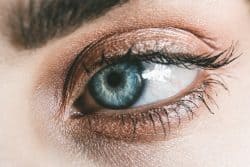Most new parents spend countless hours looking into the eyes of their newborn or toddler enjoying the delight or wonder they see in them. Sometimes, however, parents notice something other than delight. They may notice a wandering of one eye, or eyes that don’t appear to work together. If this is noticed beyond the first few weeks of life, a check by your Primary Care physician may be in order. He or she may refer your child to a specialist in eye conditions (ophthalmologist or optometrist). Lazy eye is one possibility for this “wandering” especially if the baby was premature, had low birth weight or it runs in your family. Let’s look at the causes and potential treatments for children diagnosed with Lazy Eye.

Main Causes Of Lazy Eye
There are three common causes of Lazy Eye.
- Strabismic – this very common cause of lazy eye is caused by an imbalance in the muscles responsible for positioning the eyes.
- Deprivation – this occurs if there is a problem with one eye, such as a cloudy area in the lens (cataract). This “deprives” the child of clear vision in the eye.
- Refractive – This is the result of a significant difference in the vision in each eye. This might be caused by nearsightedness, farsightedness or an imperfection on the surface of the eye (astigmatism).
Treatments For Lazy Eye
Ideally, a lazy eye will be diagnosed in childhood to increase the success of treatment.
- If the condition is caused by significant differences in sight such as near or farsightedness in the two eyes then corrective lenses may be in order.
- For children with one weak eye, a patch over the stronger eye may help build up the vision in the weaker one. This is especially helpful in children over 4.
- Eye drops to blur the vision of the stronger eye to help strengthen the weaker one are also available. A daily or twice-weekly drop of a drug called atropine can temporarily blur vision in the stronger eye. This will encourage your child to use his or her weaker eye and offers an alternative to wearing a patch.
- Surgery may be needed to repair eye muscles if your child has crossing or wandering eyes. Your child may also need surgery if he or she has droopy eyelids or cataracts.

Are Your or Your Child Experiencing Trouble With Lazy Eye?
Contact BEPS for a consultation. We can discuss the best practices for getting both eyes as strong and healthy as possible. Reach out to us today!

